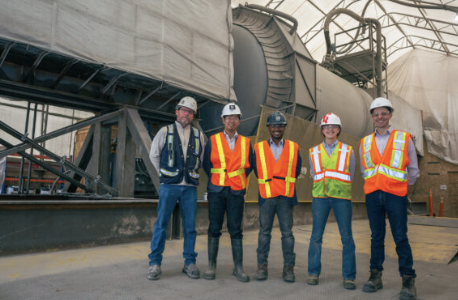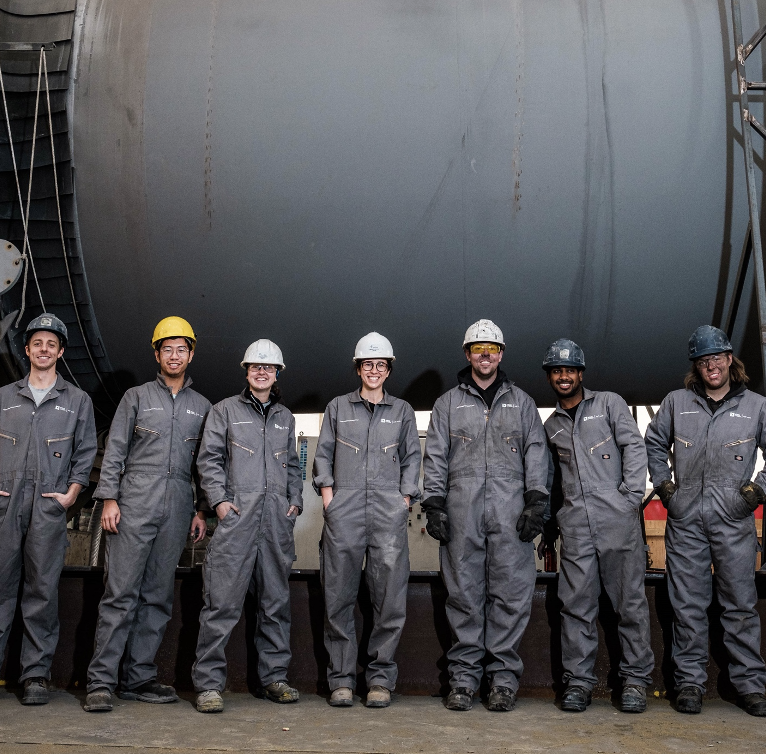Closing the Carbon Cycle is the most important challenge of the 21st century.

Apoorv Sinha, Chief Executive Officer at Carbon Upcycling Technologies shares high-impact, scalable solutions that can close the carbon loop, paving the way for a circular society and sustainable future.
The pace and scale of today’s climate action are insufficient to tackle climate change. This was the warning echoed throughout the IPCC’s final climate report. The assessment, highlighting the disconnect between current emissions, policies, and economics suggests global temperatures will exceed 1.5*C in the 21st century – unless drastic action is taken now to reduce emissions by 43% by 2030 and 60% by 2035.1

The message, while disheartening, is also an affirming gauntlet for those willing to take on the most difficult problem of our time – climate change mitigation and adaptation on a global scale.
Efforts to take on this monumental challenge, though nascent, are already underway.
In Canada, a targeted $170 per tonne carbon tax by 20302 is an important market signal by the Federal government to drive action toward lowering nationwide emissions. The Infrastructure Reduction Act (IRA) in the United States is also a much-needed impetus to further accelerate the ongoing adoption of technologies like electric vehicles (EV). While these initiatives are steps towards achieving necessary climate ambitions, the road to realizing ambitions in line with the IPCC’s targets is far from well-defined, particularly in hard-to-abate sectors like cement, steel, and mining.
Canada’s current approach to spurring change in hard-to-abate sectors is its looming carbon tax. However, its effectiveness is questionable when considering the highly commoditized nature of these industries. Last April, Canada’s carbon tax hit $65 per tonne of CO2 emissions, making it one of the highest carbon prices globally. Yet, compared to a tonne of cement at ~$1203 and steel at ~$8004, both industries where the primary assets have long been paid off, the impact does not prevent operators from running their operations as they currently exist. Ironically, fundamental sectors like cement, steel, energy, and mining face less pressure to decarbonize as such blanket CO2 taxes are implemented.
Since players in these industries can pass along their increasing costs to their end-users – like cities, private builders, etc – they are generally faced with an influx of revenue that makes adopting any new technology and associated capital deployments less attractive in a high-interest, recession-prone market. Much like gas prices going up due to geopolitical factors, cement and steel prices increasing due to CO2 emissions pricing do not directly correlate to an immediate and directly proportional increase in interest in CO2 reduction technologies.
To effectively address emissions in hard-to-abate industries, governments must balance economic and environmental interests by incentivizing the forward-thinking solutions they wish to see. If climate change is a national security threat to Canada, we should incentivize the production of essential infrastructure like sustainable cement, steel, and minerals within our borders. Similar to the IRA and CHIPS acts in the United States, provisions should be enacted to encourage the onshoring of essential infrastructure, thereby fostering a competitive green industrial sector in Canada.
Sustainable supply is not complete without adequate market demand. Efforts to initiate and sustain low-carbon procurement and to incentivize private players to buy greener products will be critical to long-term decarbonization. Like the aforementioned IRA, which will provide US$ 7.5 BN credits to help consumers purchase EVs5, Federal government support to private players to buy greener steel and cement is a novel and potentially disruptive lever Canada can use to usher the development of a wide range of low carbon technologies.

Similarly, leveraging the government’s own purchasing power to develop a clear market demand for sustainable products is an opportunity for Canada to establish a pole position as a global leader in climate action. Policies must reflect requirements or preferences for low-carbon solutions in public contracts like the American Federal Buy Clean Act that promotes the US government’s use of local, low-carbon materials6. Procurement policies like Buy Clean demonstrate the government’s monetary commitment to sustainability while creating a distinct market demand incentivizing industries to decarbonize as a competitive advantage.
As the focus on hard-to-abate industries like cement, steel, and mining inevitably rises in public profile, it is critical that we look at these sectors as a whole and use policies that encourage cohesive solutions and industrial symbiosis. Examining industries as part of a larger ecosystem helps to identify new, circular opportunities where one industry’s challenges, such as material byproducts, can be transformed into value for another, like new material for the cement and concrete industry. Harnessing circular opportunities results in value added to the local economy and net reductions in emissions and waste across multiple sectors.
In Canada and around the globe, we need to recognize the urgency with which we must address the climate crisis. Focusing on high-impact, scalable solutions that lay the foundation for a circular society and closing the carbon loop is a must.
Great Britain created the right framework in the 1700s and 1800s to foster a myriad of small-scale entrepreneurs, inventors, artisans, and problem-solvers to catalyze the Industrial Revolution. Governments that best provide the framework for private businesses to solve these problems by designing policies to incentivize real change at the necessary pace will be the leaders in today’s Carbon Revolution that will define the 21st century.
By coupling a dynamic labour force and world-class startups with progressive, bold leadership, Canada can chart the world’s path towards a circular, sustainable 21st century in which humanity closes the industrial Carbon Cycle to usher in the Carbon Age – wherein our biggest contemporary problem evolves into the most fundamental building block of the civilized world.
1https://www.ipcc.ch/report/sixth-assessment-report-cycle/
3https://www.ibisworld.com/us/bed/price-of-cement/190/
4https://www.focus-economics.com/commodities/base-metals/steel-usa/
5https://www.finance.senate.gov/imo/media/doc/7.29.22%20Estimate%20of%20Manchin%20Schumer%20agreement.pdf
6https://www.sustainability.gov/buyclean/
7https://www.epa.gov/energy/greenhouse-gas-equivalencies-calculator#results














